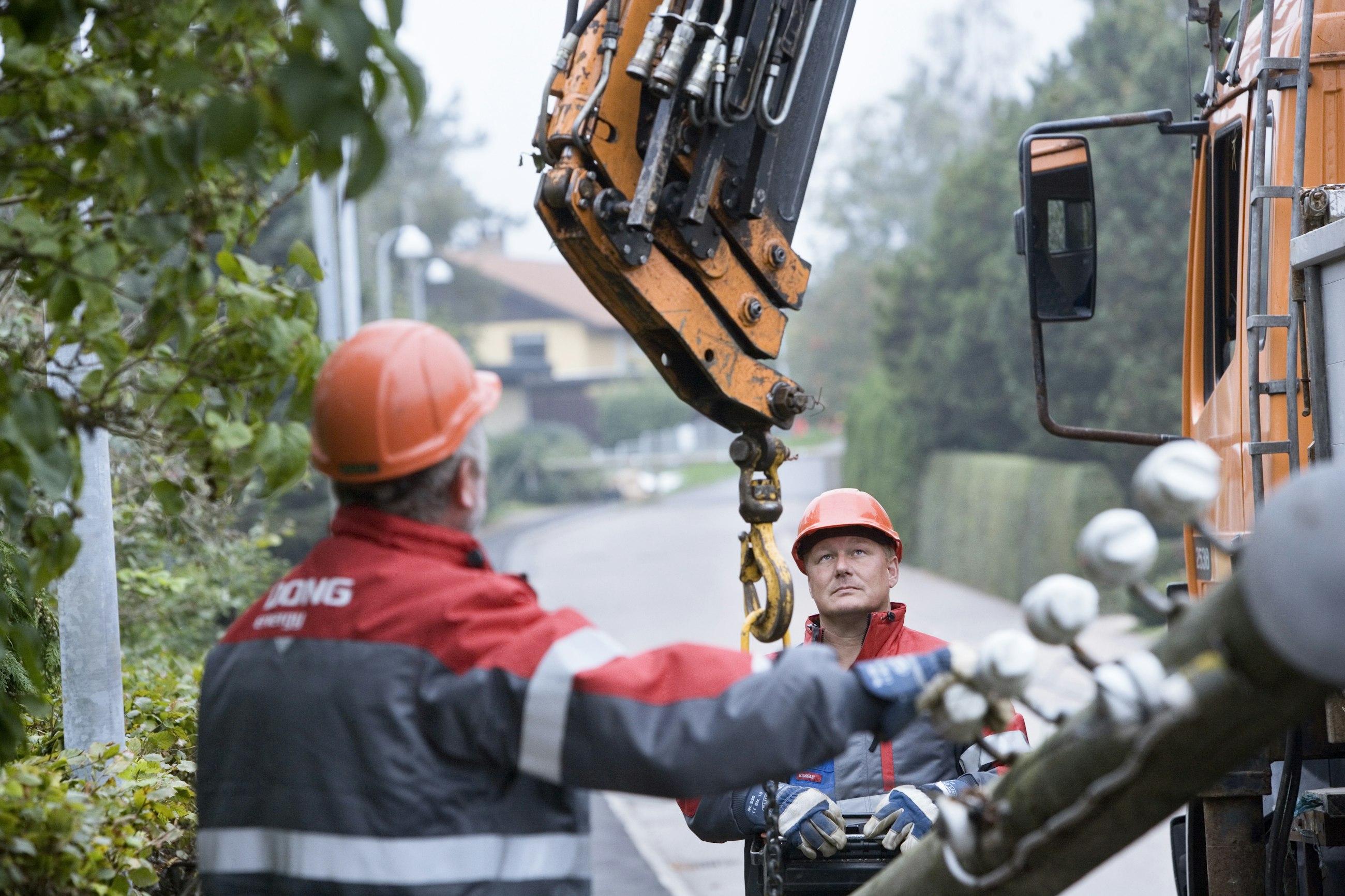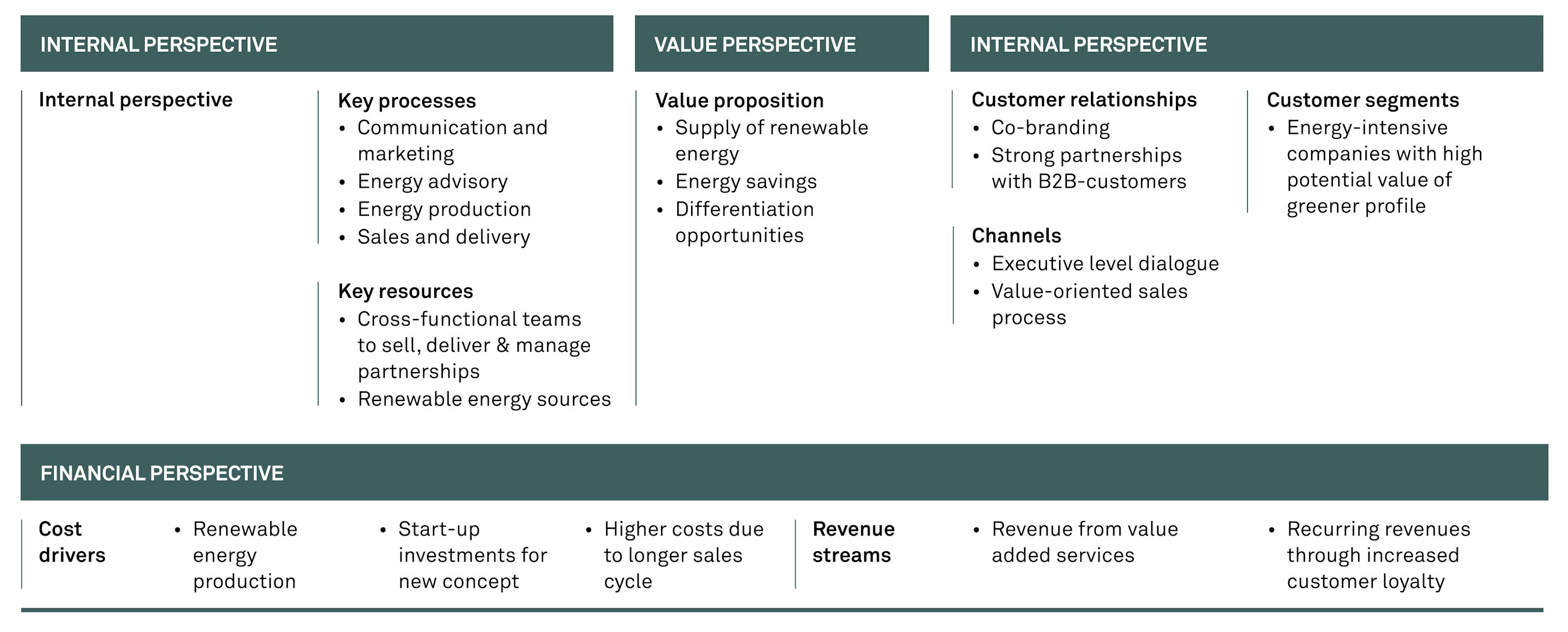– as a response to increased competition in the energy sector
9 November 2015
Because of the growing wish among Danish organisations to do business in a more sustainable way, Ørsted (formerly DONG Energy) decided that one of the means to differentiate in the market would be through what would be known as the Climate Partnership concept.
Through pilot projects, the concept soon proved to be more than just a new product in the portfolio as it was able to spur significant business value for customers. But to do so required a new internal setup of the underlying competences and processes related to sales and delivery within Ørsted.
Changing market conditions in the Danish energy sector
In the past decade, the Danish energy sector has experienced dramatic changes. New EU directives in the 1990s indicated that a new era was soon to come with a new regulatory framework. During 2000-2004, the Danish energy sector was liberalised – the fastest liberalisation of an energy market in Europe.
This dramatically changed the rules of the game since it quickly led to intense competition, but also expanded the arena in which Danish energy providers should now compete. The market opened to international competitors, and as the industry has matured energy providers have experienced an increased pressure on prices.
In the meantime, societal trends and new customer needs have emerged and gone straight to the top of the global energy agenda. Private consumers as well as business customers are now concerned with CSR, CO2 emissions and the overall environmental impact in addition to getting a low price per MWh. As electricity is traded with full transparency on Nord Pool (the exchange of electricity), the product itself was already very commoditised, but price competition was further fuelled by the liberalisation. Moreover, shifting energy provider nowadays is much less complex and gives companies an even larger economic incentive to do so. This has further increased the need for differentiation between energy providers and has resulted in an increased focus on expanding product offerings. A number of energy providers have gone from supplying just a single energy source to supplying a broad range of fuels and services which now includes e.g. financial services, price surveillance, energy services, CO2 quotas and energy savings consultancy.
Despite the increased need to differentiate in the market, energy providers still have limited opportunities to do so. For decades, the energy sector has looked for new ways to offer value on top of an increasingly commoditised product, but there has never been a real breakthrough in new ways to bundle products and innovate the business model – until now.
Climate Partnerships
In May 2007, Novo Nordisk and Ørsted together launched the first Climate Partnership in Denmark. Since then, Ørsted has entered into more than 100 Climate Partnerships and developed a unique partnership model with a variety of Danish organisations. Companies, municipalities and other organisations are constantly faced with climate questions, and they all share the common goal of decreasing environmental impact of their activities besides running financially healthy operations. Through the new Climate Partnership concept, Ørsted set out to help companies do just that.
Ørsted has a long-term vision of providing clean and reliable energy. Climate Partnerships are an important element in the climate strategy that has been developed to support this long-term vision. The strategy commits Ørsted to support a significant reduction in CO2 emissions stemming from energy production, and at the same time it serves as a strong driver for differentiation.
Providing additional value by combining existing products and services
Based on Ørsted’s many years of experience within energy savings consultancy, the Climate Partnership concept first and foremost aimed at offering a more comprehensive and customer-oriented value proposition providing significant business value to business customers. The main idea of the concept was for both parties to execute energy savings and support renewable energy sources. Ørsted’s energy advisers locate and help execute these energy savings.
When energy savings are realised, the entire or part of the reduction is used to finance the purchase of renewable energy. The purpose is to support and strengthen innovation within climate technology, increase the demand for renewable energy and strengthen climate initiatives in private and public organisations.
For the partner, the motivation behind entering a Climate Partnership would obviously be to obtain a reduction in operational costs by identifying and realising energy savings and increase revenue through enhanced differentiation.
For selected large customers with little or no resources available to drive development projects themselves, Ørsted has, moreover, offered to take on the project and help its customers through the process from establishing a business case, selling the project internally, analysing and discovering potential all the way to building the implementation plan. In short, Ørsted’s Climate Partnership concept bundles the best of its offerings to include sourcing, energy savings, financial solutions and project management into a customised value proposition that responds accurately to customers’ new climate challenges, helping them reduce costs and meet a new type of market demand.
"To us, it was fundamental to be very clear on who was going to use the new approach, and that it would only be for certain opportunities."
Well-defined customer segment
From the beginning, it was clear that Climate Partnerships would not be for every market or every company. In order to identify the ideal customers to target, Ørsted put together a simple customer prioritisation model. First of all, they realised that in order for the concept to be interesting from a business perspective, the target company should spend a reasonable amount of their total costs on energy.
In other words, the company should be relatively energy intensive. If not, the case experience showed that it often proved more valuable for the partner to carry out initiatives related to other typical elements of the CSR agenda such as ethical trade or improving the work environment.
The second criterion was that the company should have a large potential value of differentiating through a renewable profile. This, for instance, included companies exposed to large and strategically important customers with tough demands for a renewable supply chain (including subcontractors).
Together these two criteria highlighted the customers for whom a Climate Partnership would be especially interesting and to whom the market approach should be directed.
One of the key ambitions when Ørsted launched the Climate Partnership concept was to obtain a strategic differentiation in the business market, but also to some degree in the consumer market, compared to traditional energy providers. By helping businesses, municipalities and other organisations reduce their energy consumption and establish a sustainable profile, Ørsted aimed at tapping into the growing sustainable consumer trend through intensive marketing of the partnerships’ positive effects on both the climate and the business value obtained by the partner.
In a business to business context, the task of differentiation is not merely a marketing exercise. It also involves dramatic changes in organisation, processes and competences.
A more complex sales process required new competences and customer involvement
Ørsted realised that positioning the idea of a Climate Partnership concept to organisations would impose great changes on the sales process. They understood that they would have to target an entire set of new and more business-oriented stakeholders than what they were used to from selling electricity and gas.
Through initial learning as well as three intensive pilot projects spread out on Denmark and Germany, Ørsted found that the customers’ decision to enter the partnership was being pushed to the executive level. This was due to the large investment of company resources and the high potential business value the concept was offering. Because of this, the decision process grew longer and more complex.
The broader and higher involvement of the customer organisation in the sales process meant that Ørsted’s internal sales processes as well as management and sales competences had to be much more focused on selling based on business value in order to meet these needs. Based on this insight, a value-oriented sales process, including tools for i) creating interest, ii) mapping stakeholder value, iii) establishing an initial value analysis with the customer, iv) designing the final proposal and v) preparing for final negotiations at executive level, was developed by a small project group involving the people who would actually have to lead and perform the sales themselves.
In order to ensure reinforcement, a management structure, including goals and meeting agendas, was developed and implemented.
"It is my experience that in the cases where we successfully have applied a solution-centric approach, we have more focus on what the solution does for the customer and quite often even for the customer of the customer."
From silos to cross-functional teams
Running the pilots and actually starting the delivery of Climate Partnerships to customers soon proved to pose a significant need for working in diverse cross-functional teams. Over the years, Ørsted has put a great deal of effort into optimising the processes around sales and delivery. One of the drawbacks experienced when launching the Climate Partnerships was that a great deal of the optimisation had been done independently across functions and with too little attention to interaction between processes and functions. The Climate Partnership concept quickly forced new ways of combining internal resources to be able to deliver what was being promised by marketing campaigns and sales.
A new setup around delivery of Climate Partnerships was necessary because of the need for experienced people from a range of different functional areas and to ensure a competence match with customers. The team delivering a Climate Partnership would obviously not only consist of a sales person, but also of an energy adviser consultant, a communication and marketing adviser, a project manager and a set of energy specialists. Combining people with such diverse professional backgrounds and competences and having them deliver robust and comprehensive Climate Partnerships for customers have been a key challenge throughout the process.
Having people from various functional departments work together puts forth challenges – not only at an individual level, but also to existing processes and to how these processes were aligned. All the way from the initial energy screening process to realisation and communication of the energy savings projects and the actual change in energy supply.
First of all, a need to align the sales and delivery process evolved. In essence, this meant that the process of identifying potential savings initiatives had to be part of the sales process in order to prove the potential decrease in costs that would go into the business case behind the Climate Partnership agreement.
Secondly, the concept had to include a well-defined process for identifying in depth the potential revenue value from using renewable energy and implementing the new sourcing setup.
Last but not least, a new Climate Partnership also implied a process for Ørsted to support the new partner in communicating the partnership and the new initiatives. This was done through recommendations as to the communication of the new climate initiatives as well as by delivering ready-to-use marketing material. In specific cases, Ørsted would, moreover, offer the possibility of co-branding between Ørsted and the partner as was seen with e.g. Tivoli. In order to increase the probability that the proposed changes for the customer would actually take place, all processes were designed to include heavy customer involvement.
Alternative model to serve Germany
In Germany, a slightly different model of selling and delivering the Climate Partnerships was chosen. The concept would, in essence, stay the same, but as Ørsted does not sell and supply directly to the end customers, but distributes regionally through 600-700 so-called Stadtwerke, a different approach was needed. Not having a direct sales channel, but instead a vast number of customers distributing energy, Ørsted decided to establish a third party concept delivering Climate Partnerships directly to the Stadtwerke.
Early on, Ørsted realised that this meant a tighter conceptualisation and a simpler version of both the solution and the sales and delivery process. Ørsted initiated a process to develop a Climate Partnership concept suited to the local Stadtwerke and the organisations they would target. To help the Stadtwerke position themselves and sell the idea, a well-defined process and a large ready-to-use toolbox for both selling and delivering the concept were developed and implemented.
The concept has naturally implied increased costs
Developing, selling and delivering Climate Partnerships have implied increased costs. The concept has a different type and level of complexity to it than traditional services. There is more risk associated with it and a much longer and complex sales cycle than traditional sales of electricity and gas. Thus, higher costs are related to both the sales and delivery of the Climate Partnership concept.
The main reason is that the project binds up more resources that are more expensive due to the increased demand on highly specialised competences. These additional costs have to be seen in the light of the strategic business advantages as well as the new revenue streams which the project has created and will continue to create.
Ensuring new and durable revenue streams
Seen through a Ørsted business lens, the Climate Partnerships were a way to differentiate, spread risks and ensure new revenue streams. By offering energy advisory and support with the realisation of energy savings initiatives, Ørsted obtained other sources of revenue than just from supplying energy. But most importantly, the closer relationships with business to business customers built through the Climate Partnerships have already shown an increase in customer loyalty and ensured long-term commitment of customers and, thereby, durable sources of revenue.
Søren U. Schmidt, International Marketing Director, Business Innovation and Products & Solutions
Implementing the Climate Partnership concept
Great possibilities were hidden in the Climate Partnership concept as a new type of business model. The decision to combine existing products, solutions, competences and resources in a new way helped and is still helping Ørsted find new ways of tackling the increased competition and price pressure. This has been done by creating significant business value for customers, and by doing so Ørsted obtains a real differentiation in the market.
The culture of Ørsted is to a large extent a technical and process-orientated one. Therefore, it was decided that the concept should be managed by a small group of dedicated people recruited from their daily operational jobs. This was done in order to ensure focus and progress and to avoid the ”we have already tried that” attitude that often evolves when large organisations are forced to make more or less radical changes.
A central aspect of the success was the strategy of heavy involvement of external and internal resources. The project was not to be a top-down project. External involvement in the form of customers ensured a valuable outside-in perspective. Ørsted chose to develop a prototype of the concept and its processes, including roles and responsibilities, and then turned to two pilot customers in Denmark. Over a period of 2-3 months, Ørsted and the pilot customers tested and co-developed the concept further and gained valuable insight into which parts of the concept worked well and which parts had to be further developed.
Internal involvement was emphasised, especially in order to ensure that processes and tools would survive the transition from development to the operational phase, but also because people from four different functional areas with personal and professional diversity would have to work closely together with them for a long period of time.
Brian Hulvi Larsen, Head of Commercial & Consumer Markets
Everything from actual content over standard project management tasks such as agreeing on goals, processes, deliverables and KPIs as well as the kickoff and delivery of the pilot projects was done by all project participants. Along the more rational and logical project tasks, the team took a work style preference test which helped ensure a better understanding of each other and promoted teamwork and increased trust throughout the project.
In order to ensure quality of the intense involvement of internal and external resources, an experienced project management team was put together. It was important that a well-planned process was adhered to, for example in order to ensure progress and regular reviews of material and other outputs.
Another important aspect was that the programme manager would have enough organisational power to be able to resist pressure from the line organisation when they all of a sudden and untimely would be in desperate need to get the resources back in order to handle their daily operational tasks taking time away from the project.
All in all, Ørsted’s Climate Partnership concept has been an exemplary case of how businesses can innovate their business model as a response to significant changes in the business environment. By rethinking the value proposition and working cross-functionally, the Climate Partnerships have resulted in tighter customer relationships, new and long-lasting revenue sources while altogether helping to make businesses both more energy efficient and able to differentiate themselves in the market.
Brian Hulvi Larsen, Head of Commercial & Consumer Markets






